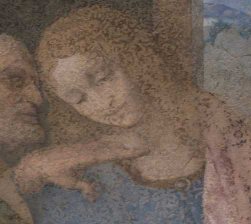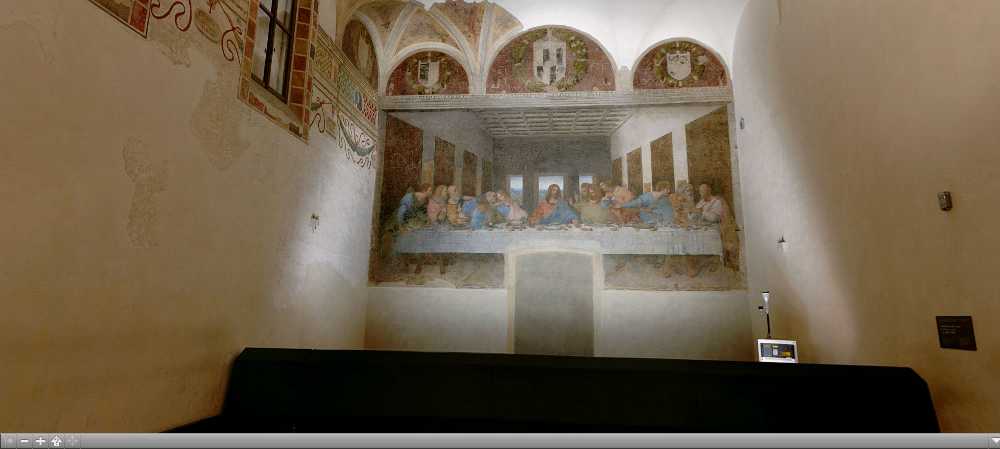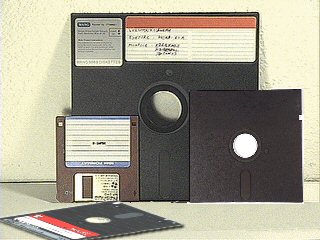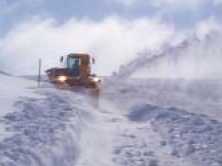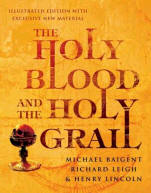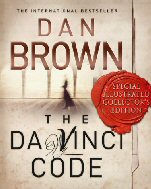Until I was eight I lived with my family in Walkergate, Newcastle on Tyne. Then my father followed his brother's footsteps and bought a small farm in the wilds of Northumberland.
My father was very much the 'Mr. Jones' in our street in Newcastle. We had the first car, the first TV, a modern kitchen - we were comfortable. Everyone else tried to keep up with us. Thrush Hall Farm was a bit of a change.
For a start - we had no electricity. It was oil lamps and candles upstairs and Calor gas lights and Tilley lamps downstairs. Our TV sat useless in a corner of 'the sitting room' along with our mains radio and gramophone.
There was no bathroom. We did have a bath - it was underneath a counter top in the scullery. We did have the luxury of running hot and cold water. It was heated by a coal fire in the kitchen. Not for us the luxury of chlorinated mains water. Our water supply ran down the field in a ditch. We had a large settling and storage tank just up the hill from the farm buildings. In wet weather it didn't have time to settle and I remember on occasion a large worm would make it's way into the bath. In dry weather the ditch dried up and we had to use a spring in our fields. That spring never dried up, no matter how dry the summer. Not only did it keep us going but it also served for serveral of our neighbours. Unlike the tap water, which had to be boiled, the spring water was pure and delicious.
Toilet? It was outside. Not for us one that flushed. We had an earth closet in a whitewashed outbuilding. I remember a wooden board with a hole you uncovered. At the side of the building was a stone slab which was removed to rake out the contents. I also remember a healthy population of spiders. One day I moved that slab while my sister was sat there and waved a bunch of nettles inside. My sister shot out of that place in hot pursuit of me. Normally I could outrun her but I was laughing so hard she caught me and pulled out handfuls of my hair.
Cooking was done on a Calor gas hob in the scullery or on the coal fire in big cast iron pots. Baking was done in an oven next to the coal fire. I remember that oven served a lot of purposes, from baking to thawing out semi frozen lambs during frosty springs.
The floors in our farm downstairs were made of stone flags. Slabs of stone about two feet by three. The walls of our farmhouse were over two feet thick. They kept us warm in winter and cool in summer. There were small windows facing south with a window ledge that served as a seat at times. There were no windows facing north west or east other than a tiny one in the scullery and an even smaller one filled with perforated zinc mesh in our walk in 'pantry'. The roof was a bit of a mixture. On one side it was stone slabs pegged onto oak beams with sheepbone pegs, on the other side it was slates. The house was built on a slope so was low enough to easily get onto the roof on the slate side. Between the house and the byre there was a cobbled farmyard.
Fridge? We didn't have one. We kept food cool in the pantry and bought fresh food from the many traveling shops which visited.
There were only two bedrooms so Mam & Dad had one and my sister and I shared the other. If you needed to 'go' there was a chamber pot under the bed.
Winters were something else! We were 1700 Ft up in the Pennine hills in a valley surrounded by open fells. When the wind blew all the snow made it's way into the valley and we were 'snowed in'. We had been warned about this and my mother took care to lay in a stock of tinned and dried food. Once the snow started the traveling shops didn't make it to our farm and we had to rely on our stores. That first year I remember helping my parents to dig snow, and dig, and dig and... The temperature plummeted. We had a thermometer outside and I remember eleven degrees of frost. At night we snuggled under two quilts and lots of blankets. (No central heating.) In the morning it was not unusual to find half an inch of ice on the windows. I learnt to keep my clothes for the next day under the top quilt and to get dressed before I got out of bed.
Our normal footwear was the Wellington boot with thick socks. In winter we learnt to wear two pairs of jeans with the outer pair outside the wellingtons to stop the snow getting inside them.
In winter we had to feed our cattle (kept in the byre) and sheep (outdoors). Feeding the cows was a twice a day job and mucking out I found difficult. My problem was that I wasn't strong enough to wheel the wheelbarrow without the risk of it turning over. When it did it was fill it again. One of our cows we milked, a mild mannered shorthorn cow called Daisy. Mostly my mother did this but both my sister and I learnt it too. The trick is to keep your head close to the side of the cow )so she can't whip you in the eyes with her tail)and avoid her stepping or kicking over the pail (by keeping her occupied with some food). We could only milk her part of the year - for the rest we bought milk from Sarah Clark our neighbour.
Another job my father gave me was to bury dead sheep. Our first sheep were old and several died of age. Try burying a sheep in winter when the already stony ground is frozen hard. You do it with a pick, a spade and a shovel.
In spring there was lambing. I learnt to catch the new born lambs with a shepherd's crook and inject it against disease. Lambs are nice, cute and playful. Adult sheep are smelly and frustratingly stupid however. They would jump the stone walls of our farm to get to the much poorer grazing in our neighbours property. As they did so they often caused the ancient dry stone walls to collapse and these needed rebuilding. They say dry stone walling is an art but I learnt it at an early age. I must have been ok at it because my repairs didn't fall down again.
Summer was a different matter. It meant haymaking and we did it the hard way by hand since we did not have a tractor. We got someone to cut the hay and we then used huge wooden rakes to turn the swathes over after drying a few days. If it rained - we did it again. We then raked three rows into one and again let it dry. Next we raked it into small mounds - Kyles. These were then put together into much bigger mounds - Pikes. After the pikes had dried a while they were taken by tractor to the hay barn where it was forked through the narrow door. It was all hard work and my sister and I being only ten and eight years old didn't get me out of it.
Around 1960 electricity finally made it to our valley and at last we could watch tv again. By this time however our TV was too old to pick up the ITV channels that were now being broadcast. We didn't miss it much. We were too busy on the farm. About the same time we did some building work on the farm and at last installed a bathroom with flush toilet and a third bedroom. The scullery was extended in a DIY conversion and joined with the walk in pantry. My father did the work, taking down the wall and installing a thick oak beam to support the bit left. The following morning we came downstairs to find that oak beam bent nearly in a U shape. There turned out to be another 10 feet of two feet thick stone wall above it. It all had to come down. Fortunately this bit wasn't load bearing at the top. To replace the walk in pantry we knocked through to the stable next door and I helped a friend who often helped out on our farm, Dick Phillipson, build a new wall. I remember him sitting astride a beam while I passed him buckets of rubble to fill the gap between the two layers of wall he had built. Suddenly there was a loud rumble, a muttered curse and Dick got very carefully down from his perch. One half of the wall which supported the beam he was sitting on had collapsed and had to be rebuilt.
We also dug out the back of the house and made a new entrance from the yard into the scullery. It used to get filled with snow in winter so eventually we roofed this area over.
Dick usually cut our hay and brought the pikes' in for us. He lived at Nenthead and came over from there on his tractor. He was already old when I first met him but he didn't seem old to me. He was very strong in a wiry way and was one of the few people I knew who had been a lead miner before the mines in the area closed down. His tractor made all the difference to us. My mother was persuaded to drive it. One day I remember her trying to change gear as she brought in a pike. She missed the gear and the tractor started to roll backwards down the hill. She wasn't heavy enough to get enough pressure on the brake and would have ended up back down the hill had one of the prongs of the pike lifter not struck one of the large Scots pine trees which separated two of our hay fields. A few years ago I visited our old farm again, (it's now Throstle Hole Abbey, a Buddhist monastery) and the mark can still be seen in the tree after 40 years.
With the arrival of electricity we bought a deep freeze. I remember seeing it empty apart from the first item we put in it - a packet of fishcakes. One day when Dick arrived my mother took them out to have for lunch. She wasn't quite used to deep freezes though because when she served them they burnt your mouth on the outside and had a chunk of frozen fish in the inside. We still tease her about hot frozen fishcakes. The freezer didn't stay empty long. We had whole pigs, vegetables and fruit in it.
Electricity meant also that my father could start installing central heating. He bought a coal fired boiler, a pump, pipes and radiators and started connecting things up. When he got sick of the job of bashing holes through two foot thick stone walls I took over. I knew nothing about central heating and simply connected everything in series. When we switched it on the radiator in my room was red hot and the one last in line, downstairs in the sitting room, was barely warm. It worked though and made the house warmer. I then read books on central heating and found out what I should have done. Years later I met a guy in a pub in Allendale who talked about what a botch job the central heating was there. I kept quiet.
My mother did most of the work on the farm since my father worked full time as an electrical engineer. She raised cattle, sheep, pigs, chickens, ducks and at one time goats. She gardened, repaired walls, dipped sheep, milked, lambda, calfed, built animal shelters and cleaned them. In addition she delivered children to the primary school and did a post round. After my parents divorced she sold the farm in 1969 to some Londoners who turned it into a hippy commune. Later it became
Throstle Hole Abbey a Soto Zen Buddhist abbey; the name coming from the old name for Thrush Hall.
 . People in the UK don't seem to be aware that some countries (e.g. Belgium) will not accept blood donors who lived in the UK during the 1990s.
. People in the UK don't seem to be aware that some countries (e.g. Belgium) will not accept blood donors who lived in the UK during the 1990s.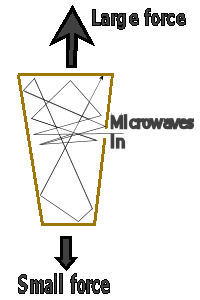

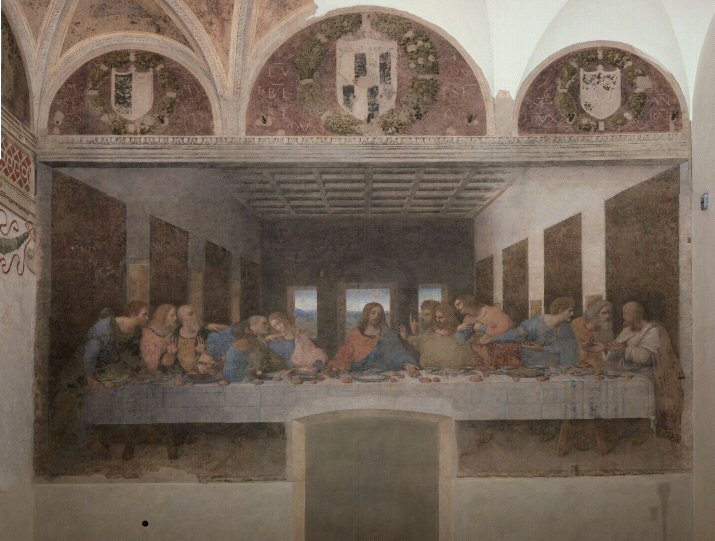
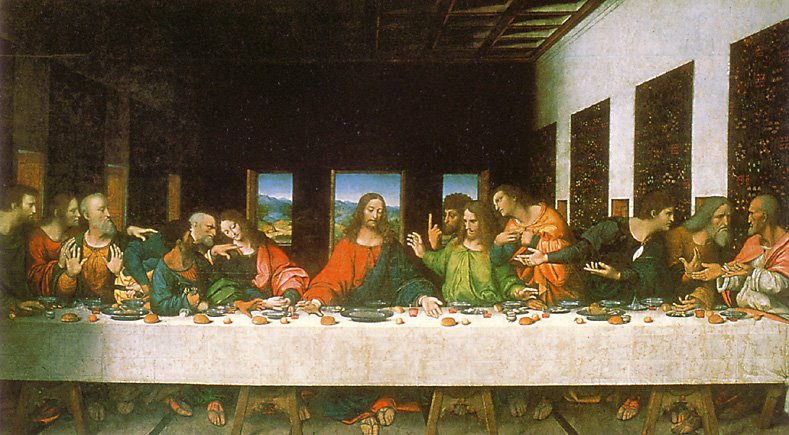

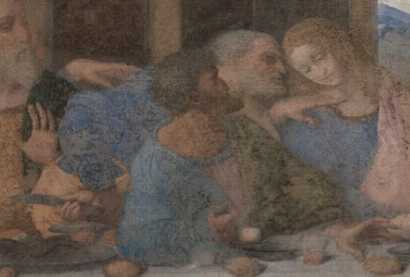
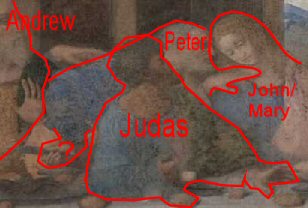
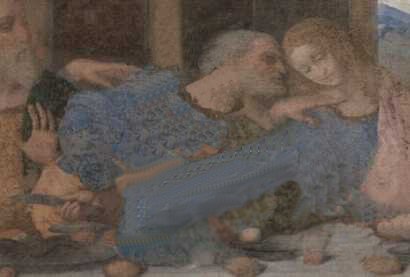
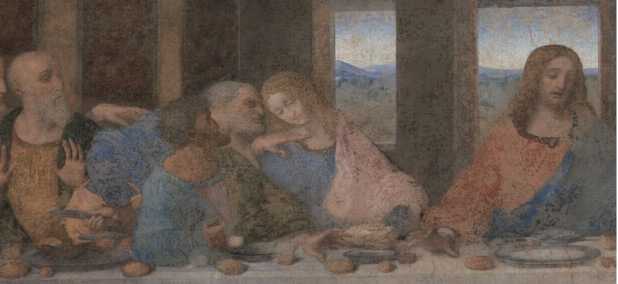
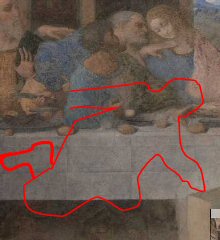
 The last suggestion is that Peter is holding the knife at a very odd angle. The 'copies' suggest that this is the case and so too does this sketch by Leonardo - clearly that knife in the hand of Peter gave him some problems and he decided to practice.
The last suggestion is that Peter is holding the knife at a very odd angle. The 'copies' suggest that this is the case and so too does this sketch by Leonardo - clearly that knife in the hand of Peter gave him some problems and he decided to practice. 